WorldWide-Travel
Tuesday, June 30, 2015
Rezervaţia Naturală Râpa Roşie-Rapa Rosie Nature Reserve
Rezervaţia Naturală Râpa Roşie este situată la doar 3 km de oraşul Sebeş, pe drumul ce leagă această localitatea de satul Daia Romana, în partea de nord.
Rapa Rosie Nature Reserve is located just 3 km from Sebes, on the road connecting this town with Daia Romanian village in the north.
Râpa Roşie este o rezervaţie geologică cu o suprafaţă de 10 ha. Pereţii săi au înălţimi cuprinse între 80 si 100 m. Apa a săpat pe un substrat variat (pietrişuri, nisipuri cuarţoase, gresii) forme ciudate: coloane, turnuri, piramide - toate de culoare roşiatică.
Rapa Rosie is a geological reserve with an area of 10 ha. Its walls have heights between 80 and 100 m. The water dug a varied substrate (gravel, sand quartz, sandstone) strange shapes: columns, towers, pyramids - all reddish.
Hăuri adânci se deschid în stânga şi dreapta, iar apa de ploaie formează pârâiaşe sângerii, care se prăvălesc în fundul văgăunilor cu un zgomot sinistu. Pasările au săpat în lut zeci şi zeci de găuri. Coborârea spre pod, peste apa Secaşului atrage atenţia asupra tunelurilor săpate de apa de ploaie, care cu timpul se surpă formând şanturi enorme.
Tot aici se pot întâlni si câteva specii vegetale rare (Cotoneaster integarrima, Ephedra distachya, Centaurea atropurpurea, Dianthus serotinus, Cephalaria radiata, Asplenium nigrum).
Deep abysses open left and right, and rainwater forms rivulets bloody that crash down into the bottom of the ravine with a sinistu noise. Birds clay dug dozens of holes. The descent to the bridge over Secas draws attention to the tunnels dug rainwater that time are destroyed forming huge ditches.
Here you can meet and several rare plant species (Cotoneaster integarrima, Ephedra distachya, Centaurea atropurpurea, Dianthus serotinus, Cephalarea radiata, Asplenium nigrum).
Tuesday, March 31, 2015
10 Top Tourist Attractions in Brazil
Sprawling across half of South America, Brazil is the fifth largest country in the world. White-sand beaches, tropical islands, music-filled metropolises and charming colonial towns are dotting its 7,500 km (4,600 mi) long coastline. Inland, Brazil tourist attractions consist of imposing waterfalls, wetlands filled with wildlife, and the untouched wilderness of the Amazon rainforest where several isolated tribes still live without any contact with the rest of the world.
Ouro Preto
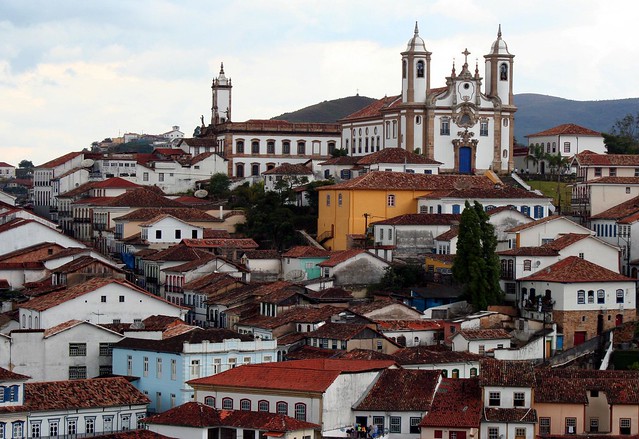 One of Brazil’s best-preserved colonial towns, Ouro Preto, meaning “black gold”, was founded at the end of the 17th century. It quickly became the epicenter of a new gold rush in the state of Minas Gerais. The city contains well preserved Portuguese colonial architecture, while modern buildings must adhere to historical standards maintained by the city. 18th- and 19th-century churches decorated with gold and the sculptured works of Aleijadinho make Ouro Preto one of the most popular tourist attractions in Brazil.
One of Brazil’s best-preserved colonial towns, Ouro Preto, meaning “black gold”, was founded at the end of the 17th century. It quickly became the epicenter of a new gold rush in the state of Minas Gerais. The city contains well preserved Portuguese colonial architecture, while modern buildings must adhere to historical standards maintained by the city. 18th- and 19th-century churches decorated with gold and the sculptured works of Aleijadinho make Ouro Preto one of the most popular tourist attractions in Brazil.
Teatro Amazonas
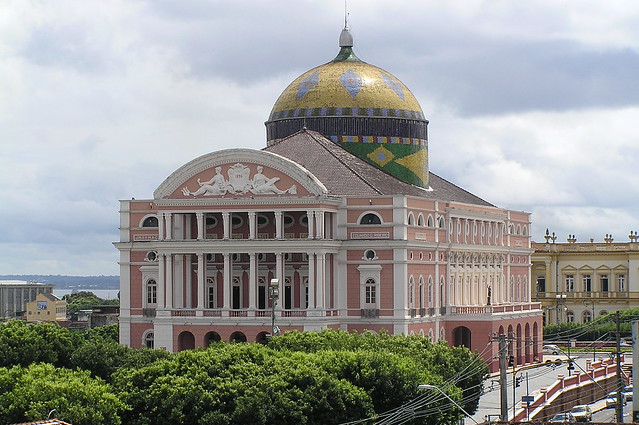 Teatro Amazonas or Amazon Theatre is an opera house located in Manaus, in the heart of the Amazon Rainforest. It was built during the heyday of rubber trade using materials from all over the world, with furniture from Paris, marble from Italy, and steel from England. On the outside of the building, the dome was covered with 36,000 decorated ceramic tiles painted in the colors of the Brazilian national flag.
Teatro Amazonas or Amazon Theatre is an opera house located in Manaus, in the heart of the Amazon Rainforest. It was built during the heyday of rubber trade using materials from all over the world, with furniture from Paris, marble from Italy, and steel from England. On the outside of the building, the dome was covered with 36,000 decorated ceramic tiles painted in the colors of the Brazilian national flag.
The first performance was given on January 7, 1897, with the Italian opera La Gioconda. The opera house was closed down soon after however as the rubber trade declined and Manaus lost its main source of income. There wasn’t a single performance in Teatro Amazonas for 90 years until 1990 when it reopened its doors.
Fernando de Noronha
 Fernando de Noronha is a beautiful archipelago with pristine beaches, landscapes and wildlife, situated 354 km (220 miles) off the northeastern coast in Brazil. The archipelago was discovered by Amerigo Vespucci in 1503 and temporarily occupied by the Dutch and French before Portugal established dominion in 1737. Today only the largest of the 21 islands is inhabited with a population of about 3,500. The islands are a Mecca for divers and snorkelers with warm waters year-round and very good visibility even at depths of 50 meters.
Fernando de Noronha is a beautiful archipelago with pristine beaches, landscapes and wildlife, situated 354 km (220 miles) off the northeastern coast in Brazil. The archipelago was discovered by Amerigo Vespucci in 1503 and temporarily occupied by the Dutch and French before Portugal established dominion in 1737. Today only the largest of the 21 islands is inhabited with a population of about 3,500. The islands are a Mecca for divers and snorkelers with warm waters year-round and very good visibility even at depths of 50 meters.
Historic Center of Olinda
 Another well preserved colonial city, Olinda is located on the Brazil’s northeastern coast, just north of Recife. Olinda features a number of major touristic attractions, such as a historic downtown area, churches, and the famous Carnival of Olinda. Many bars, restaurants, artist and craftspeople studios add charm to the old-town setting.
Another well preserved colonial city, Olinda is located on the Brazil’s northeastern coast, just north of Recife. Olinda features a number of major touristic attractions, such as a historic downtown area, churches, and the famous Carnival of Olinda. Many bars, restaurants, artist and craftspeople studios add charm to the old-town setting.
Salvador Beaches
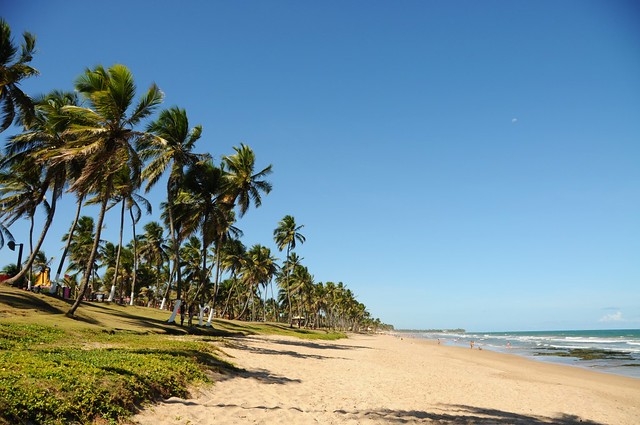 Salvador is the capital of the state of Bahia, with an attractive colonial town, a vibrant musical scene and loads of exceptional beaches all around. The beaches range from calm inlets, ideal for swimming, diving and sailing, as well as open sea inlets with strong waves, popular with surfers. There are also beaches surrounded by reefs, forming natural pools of stone, ideal for children.
Salvador is the capital of the state of Bahia, with an attractive colonial town, a vibrant musical scene and loads of exceptional beaches all around. The beaches range from calm inlets, ideal for swimming, diving and sailing, as well as open sea inlets with strong waves, popular with surfers. There are also beaches surrounded by reefs, forming natural pools of stone, ideal for children.
Pantanal
 The Pantanal is the world’s largest wetland, lying mostly in Western Brazil but extending into Bolivia and Paraguay as well. Famous for its wildlife, it is one of Brazil’s major tourist attractions. Unlike the Amazon rainforest, in the Pantanal you are virtually guaranteed to actually see the wildlife. Capybara and the Yacare Caiman are present in the millions. The Pantanal is also home to one of the largest Jaguar populations in the Americas.
The Pantanal is the world’s largest wetland, lying mostly in Western Brazil but extending into Bolivia and Paraguay as well. Famous for its wildlife, it is one of Brazil’s major tourist attractions. Unlike the Amazon rainforest, in the Pantanal you are virtually guaranteed to actually see the wildlife. Capybara and the Yacare Caiman are present in the millions. The Pantanal is also home to one of the largest Jaguar populations in the Americas.
Rio Carnival
 There are carnival celebrations in virtually every corner of Brazil, the best-known ones taking place in Recife together with the neighboring Olinda and Salvador. But the biggest and most famous carnival is undoubtedly the Carnival inRio de Janeiro. The Rio Carnival attracts two million people per day on the streets and almost half a million foreigners during its 4 day celebration. The Carnival is all over the place, in the streets and squares, bars, clubs and all other venues in Rio, concluding in the spectacular Rio Samba Parade at the Sambadrome.
There are carnival celebrations in virtually every corner of Brazil, the best-known ones taking place in Recife together with the neighboring Olinda and Salvador. But the biggest and most famous carnival is undoubtedly the Carnival inRio de Janeiro. The Rio Carnival attracts two million people per day on the streets and almost half a million foreigners during its 4 day celebration. The Carnival is all over the place, in the streets and squares, bars, clubs and all other venues in Rio, concluding in the spectacular Rio Samba Parade at the Sambadrome.
Amazon River
 At approximately 6,400 km (4,000 miles) the Amazon River is the second longest river in the world, just slightly shorter than the Nile, and the largest river by volume. The Amazon has over 3,000 recognized species of fish and new species are still being discovered. The Amazon Basin is covered by half of the planet’s remaining rainforests. Although a tenth of the world’s estimated 10 million living species live in the Amazon rainforest, jungle tours are more about the boating upriver into the damp, buzzing, oppressive ambience than actually spotting animals.
At approximately 6,400 km (4,000 miles) the Amazon River is the second longest river in the world, just slightly shorter than the Nile, and the largest river by volume. The Amazon has over 3,000 recognized species of fish and new species are still being discovered. The Amazon Basin is covered by half of the planet’s remaining rainforests. Although a tenth of the world’s estimated 10 million living species live in the Amazon rainforest, jungle tours are more about the boating upriver into the damp, buzzing, oppressive ambience than actually spotting animals.
Iguaçu Falls
 One of the great natural wonders of the world, Iguaçu Falls is situated on the border between Brazil and Argentina. The waterfall system consists of 275 falls along the Iguazu River. The most impressive of them all is the Devil’s Throat a U-shaped with a height of 82 meter (269 ft). The falls can be reached from the cities Foz do Iguaçu in Brazil and Puerto Iguazú in Argentina, as well as from Ciudad del Este in Paraguay. On the Brazilian side there is a long walkway along the canyon with an extension to the lower base of the Devil’s Throat.
One of the great natural wonders of the world, Iguaçu Falls is situated on the border between Brazil and Argentina. The waterfall system consists of 275 falls along the Iguazu River. The most impressive of them all is the Devil’s Throat a U-shaped with a height of 82 meter (269 ft). The falls can be reached from the cities Foz do Iguaçu in Brazil and Puerto Iguazú in Argentina, as well as from Ciudad del Este in Paraguay. On the Brazilian side there is a long walkway along the canyon with an extension to the lower base of the Devil’s Throat.
Christ the Redeemer
 Christ the Redeemer is the famous statue of Jesus Christ in Rio de Janeiro. Located at the peak of the 700 meters (2,300 ft) Corcovado mountain, it provides a sweeping panorama from the interior of Guanabara bay to the north, to Lagoa Rodrigo de Freitas to the south. The Christ the Redeemer statue stands 39.6 meters (130 ft) tall, including its 9.5 meters (31 ft) pedestal and has become an icon of Rio and Brazil.
Christ the Redeemer is the famous statue of Jesus Christ in Rio de Janeiro. Located at the peak of the 700 meters (2,300 ft) Corcovado mountain, it provides a sweeping panorama from the interior of Guanabara bay to the north, to Lagoa Rodrigo de Freitas to the south. The Christ the Redeemer statue stands 39.6 meters (130 ft) tall, including its 9.5 meters (31 ft) pedestal and has become an icon of Rio and Brazil.
Everything we do, we believe in challenging it. We believe in thinking differently. We just happen to make great tourism articles. Want to follow us ?
Thank you http://www.touropia.com/tourist-attractions-in-brazil/
10 Best Places to Visit in Portugal
Located on the western coast of the Iberian peninsula, Portugal is one of Europe’s most visited countries due to its idyllic climate, affordable travel costs and exceptional attractions. Portugal’s varied geography ranges from the verdant mountains and vineyards of the North to the rolling farmland and medieval villages of the Central region to the glamorous beaches of the Algarve along the southern coastline. Also belonging to Portugal but lying in the Atlantic Ocean are the archipelagos of Azores and Madeira, known for their lush landscapes and flower gardens. An overview of the best places to visit in Portugal.
wikipedia/nanabou
flickr/pedrosimoes7
flickr/salady
Coimbra
A small, charming town situated by the Mondego River in Central Portugal , Coimbra is home to a treasure trove of historic sites, beautiful gardens, the country’s second style of fado music, and a lively culture that is centered around one of Europe’s oldest universities.
Azores
 The Archipelago of the Azores is composed of 9 volcanic islands in the Atlantic Ocean, located about 1,500 km (930 miles) west of Lisbon. Renowned for world-class whale watching, hot mineral springs, and quaint seaside towns, each island has its own fascinating identity. São Miguel is the largest island of the Azores and is known as “The Green Island” while Pico is home to the highest mountain in Portugal.
The Archipelago of the Azores is composed of 9 volcanic islands in the Atlantic Ocean, located about 1,500 km (930 miles) west of Lisbon. Renowned for world-class whale watching, hot mineral springs, and quaint seaside towns, each island has its own fascinating identity. São Miguel is the largest island of the Azores and is known as “The Green Island” while Pico is home to the highest mountain in Portugal.
Aveiro
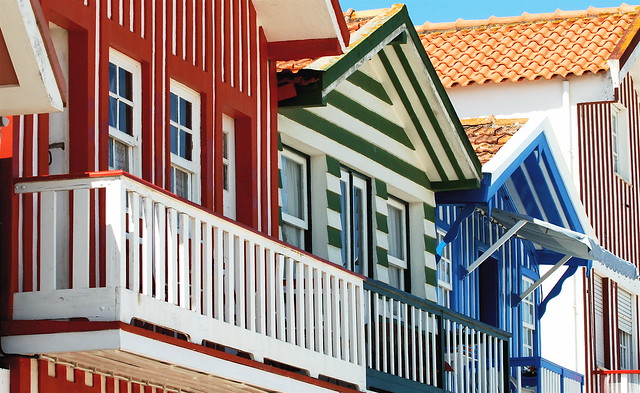 Hugging the country’s Atlantic Coast in Central Portugal, Aveiro is a bustling city often called “the Venice of Portugal” due to its picturesque setting of scenic canals connected by charming bridges and dotted with colorful gondolas and speed boats. Historic sites, gorgeous beaches and tasty cuisine also make Aveiro a popular tourist destination.
Hugging the country’s Atlantic Coast in Central Portugal, Aveiro is a bustling city often called “the Venice of Portugal” due to its picturesque setting of scenic canals connected by charming bridges and dotted with colorful gondolas and speed boats. Historic sites, gorgeous beaches and tasty cuisine also make Aveiro a popular tourist destination.
Evora
flickr/Jos Dielis
 Evora may be a small town in the Alentejo plains region of southern Portugal, but it packs huge tourist appeal. With a history dating back more than 2,000 years, Evora was once a flourishing city under Roman rule. Today, Evora is the capital of the Alentejo region, regarded for its well-preserved Old Town, which shelters more than 4,000 historic structures including the old Roman walls and temples.
Evora may be a small town in the Alentejo plains region of southern Portugal, but it packs huge tourist appeal. With a history dating back more than 2,000 years, Evora was once a flourishing city under Roman rule. Today, Evora is the capital of the Alentejo region, regarded for its well-preserved Old Town, which shelters more than 4,000 historic structures including the old Roman walls and temples.
Porto
flickr/J-Cornelius
 World famous for its production of fine port wine, the busy city of Porto sprawls along the hills overlooking the Douro River in northern Portugal. At the heart of Porto is the charming pedestrian zone, the Ribeira, an atmospheric place on the river, buzzing in live music, cafes, restaurants and street vendors. Dominating this popular tourist setting is the Ponte Dom Luis, a metal, double-deck arch bridge that links Porto to Vila Nova de Gaia, well-known for its port wine cellars.
World famous for its production of fine port wine, the busy city of Porto sprawls along the hills overlooking the Douro River in northern Portugal. At the heart of Porto is the charming pedestrian zone, the Ribeira, an atmospheric place on the river, buzzing in live music, cafes, restaurants and street vendors. Dominating this popular tourist setting is the Ponte Dom Luis, a metal, double-deck arch bridge that links Porto to Vila Nova de Gaia, well-known for its port wine cellars.
Madeira
flickr/Jayembee69
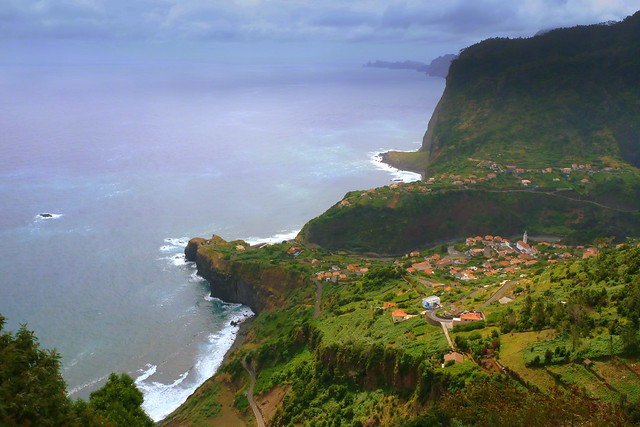 Sporting the nickname “Floating Garden of the Atlantic,” Madeira is a fertile oasis in the Atlantic Ocean between Portugal and North Africa, popular for its lush green landscapes, flower gardens and wines. The capital and largest city on Madeira is Funchal, home to historic churches, fortresses, tourist resorts and restaurants as well as the tree-lined Lido Promenade, which presents spectacular ocean views.
Sporting the nickname “Floating Garden of the Atlantic,” Madeira is a fertile oasis in the Atlantic Ocean between Portugal and North Africa, popular for its lush green landscapes, flower gardens and wines. The capital and largest city on Madeira is Funchal, home to historic churches, fortresses, tourist resorts and restaurants as well as the tree-lined Lido Promenade, which presents spectacular ocean views.
Sintra
wikipedia/Calapito
 Nestled in the foothills of the Sintra Mountains on the Lisbon Coast, just a day trip away from Portugal’s capital city,Sintra presents a spectacular setting of verdant hills, sprinkled with pretty villas, royal retreats, castles and palaces such as the famous Pena’s Palace, a fantastical castle reminiscent of Germany’s Neuschwanstein.
Nestled in the foothills of the Sintra Mountains on the Lisbon Coast, just a day trip away from Portugal’s capital city,Sintra presents a spectacular setting of verdant hills, sprinkled with pretty villas, royal retreats, castles and palaces such as the famous Pena’s Palace, a fantastical castle reminiscent of Germany’s Neuschwanstein.
Obidos
flickr/paula moya
 Located on a hilltop in the Centro Region of western Portugal, Obidos is encircled by an old fortified wall. Besides the wall, the magnificent medieval castle and historic center of Obidos make up the city’s main attraction and can easily be walked. A labyrinth of narrow, cobbled streets leads visitors along busy squares, inviting cafes, quaint shops and whitewashed houses spruced with colorful flowers.
Located on a hilltop in the Centro Region of western Portugal, Obidos is encircled by an old fortified wall. Besides the wall, the magnificent medieval castle and historic center of Obidos make up the city’s main attraction and can easily be walked. A labyrinth of narrow, cobbled streets leads visitors along busy squares, inviting cafes, quaint shops and whitewashed houses spruced with colorful flowers.
Algarve
flickr/amaianos
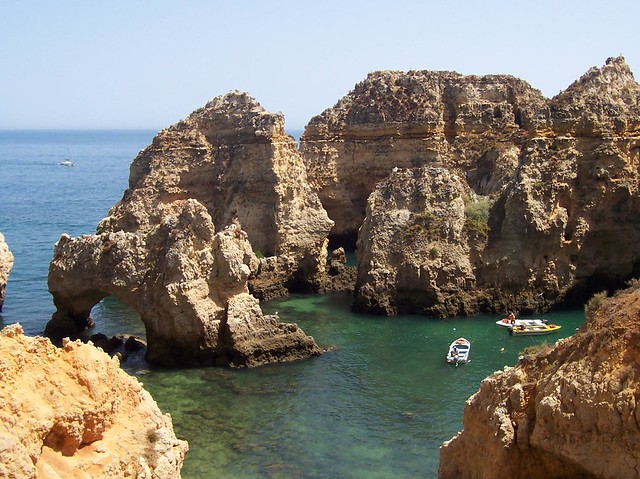 Sunny Mediterranean climate, gorgeous beaches, picturesque towns, historic sites, fabulous cuisine and affordable costs are just some of the reasons that make the Algarve one of the best places to visit in Portugal. Located in the country’s southernmost region, the Algarve offers a feast for the eyes, from tranquil landscapes of olive groves, traditional whitewashed villages to the wild, windswept coast with its dramatic cliffs dotted with summer resorts.
Sunny Mediterranean climate, gorgeous beaches, picturesque towns, historic sites, fabulous cuisine and affordable costs are just some of the reasons that make the Algarve one of the best places to visit in Portugal. Located in the country’s southernmost region, the Algarve offers a feast for the eyes, from tranquil landscapes of olive groves, traditional whitewashed villages to the wild, windswept coast with its dramatic cliffs dotted with summer resorts.
Lisbon
flickr/F H Mira
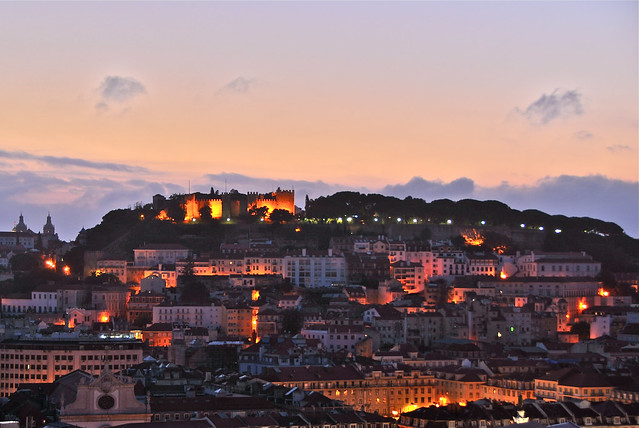 Stretching along the banks of the Tagus River near the Atlantic Ocean, Portugal’s capital and largest city winds upward among seven steep hills, forming an enchanting destination of warm weather, alluring alleys, quaint shops, Gothic cathedrals, impressive bridges and colorful neighborhoods, reverberating in traditional fado music.
Stretching along the banks of the Tagus River near the Atlantic Ocean, Portugal’s capital and largest city winds upward among seven steep hills, forming an enchanting destination of warm weather, alluring alleys, quaint shops, Gothic cathedrals, impressive bridges and colorful neighborhoods, reverberating in traditional fado music.
Everything we do, we believe in challenging it. We believe in thinking differently. We just happen to make great tourism articles. Want to follow us ?
Top Destinations in Croatia
It’s exceptionally hard trying to construct a list of the best destinations in Croatia as there’s so many wonderful destinations for a holiday, making it rather hard to choose. The following list isn’t really a proper chart – many of the following destinations are on par – although we would probably always consider Dubrovnik at number one.
1. Dubrovnik Croatia’s jewel, Dubrovnik is absolutely magical! Its Old Town is truly stunning and an absolute must-see – it’s easy to spend a couple of days exploring, walking the city walls, and visiting all the sights in and around it. Dubrovnik does tend to get very crowded during the summer months – especially as it receives so many cruise ship passengers – so a citybreak trip outside the busiest of months is ideal. Alternatively, putting up with the crowds may well be worth it to see Dubrovnik! There’s a very wide variety of accommodation in Dubrovnik – from hostels, to private rooms to 5* luxury hotels. Some hotels have their own private beaches or swimming areas, whilst there are also public city beaches such as Banje if you fancy combining your sightseeing with some sea ‘n’ sun relaxation. There’s also plenty of opportunity for day trips to nearby islands – such as small island of Lokrum (which is very close), the Elafiti islands or Mljet, and other nearby resorts such as Cavtat. For the more adventurous amongst you, you can also take day-trips to the neighbouring countries of Montenegro and Bosnia & Hercegovina.
1. Dubrovnik Croatia’s jewel, Dubrovnik is absolutely magical! Its Old Town is truly stunning and an absolute must-see – it’s easy to spend a couple of days exploring, walking the city walls, and visiting all the sights in and around it. Dubrovnik does tend to get very crowded during the summer months – especially as it receives so many cruise ship passengers – so a citybreak trip outside the busiest of months is ideal. Alternatively, putting up with the crowds may well be worth it to see Dubrovnik! There’s a very wide variety of accommodation in Dubrovnik – from hostels, to private rooms to 5* luxury hotels. Some hotels have their own private beaches or swimming areas, whilst there are also public city beaches such as Banje if you fancy combining your sightseeing with some sea ‘n’ sun relaxation. There’s also plenty of opportunity for day trips to nearby islands – such as small island of Lokrum (which is very close), the Elafiti islands or Mljet, and other nearby resorts such as Cavtat. For the more adventurous amongst you, you can also take day-trips to the neighbouring countries of Montenegro and Bosnia & Hercegovina.
2. Plitvice Lakes
The Plitvice Lakes National Park is another amazing wonder within Croatia. With sixteen interconnecting waterfalls, and beautiful flora and fauna, visiting the Park is quite a unique experience.
It’s possible to stay right by the park itself, or just outside, so you can easily spend a good couple of days exploring its various trails. There’s also a boat tour within the park, as well as a shuttle bus that runs regularly, so you don’t have to spend all your time hiking around.
As one of Croatia’s top attractions, the Park attracts a large number of visitors in the summer months but its size means large numbers are quite bearable. However, the Park is actually open year-round so it’s also more than suitable a destination during winter (and quite stunning to see in the snow) – and there’s even a very small ski resort nearby; the expert skiers amongst you will be disappointed, but it’s quite suitable for beginners or families. (Not to mention that skiing in the rather unique surroundings is rather exciting.)
Plitvice is a little off the beaten track in terms of where most visitors to Croatia go to (it is inland north of Zadar, and a good few hours southwest of Zagreb), but it’s definitely worth trying to incorporate it into your trip if you can. If you do fancy visiting the Plitvice Lakes, we’d recommend flying into one of these two places, and then using Plitvice as a stop-off point either on your way to or from the coast.
3. Istria
Okay, so we’re cheating a little bit by naming an entire region, but as so many of Istria‘s resorts are perennially popular (it’s easy to see why) we thought we would include the whole lot as one destination. The region was totally unscathed by the war so was still visited even during that time, and just after was quick to promote its tourist offerings once more.
With good transport connections including flights to Pula or to nearby Italy, it is easy to reach the area. Most Europeans drive down from their home country, but there are also bus connections to Italy as well (from Trieste) and a summer catamaran service that connects several Istrian ports toVenice – a quick and easy easy of combining that fantastic holiday destination with this one in Croatia.
Porec is one of the top resorts – there’s a good selection of resort type hotels there – though our personal favourite is the charming Rovinj (shown above) and its wonderful harbour. Both of these have a number of sights for you history buffs, but don’t forget to visit the Pula to view the amazingly well-preserved Roman amphitheatre.
However, Istria’s (relatively!) undiscovered secrets are its wonderful inland, hilltop towns and villages. These include Motovun, which is gaining recognition of its annual film festival, and Buzet, which is famed for its truffle festival every autumn. And not forgetting Hum – (unofficially) considered to be the world’s smallest town, with only 22 inhabitants.
4. Zagreb
Some compare Zagreb to the ever popular Prague, which is no surprise to us. Zagreb is also perfect for a short break with numerous sights, restaurants, nightlife and even not-all-that-bad shopping. (Although you’re not going to get any bargains here!)
Zagreb has good flight and other connections to the UK and Europe, so it’s easy to reach – and it’s only around 2 hours from the UK, which makes it a very acceptable place for a city break. Alternatively, Zagreb is also very well connected to the rest of Croatia by train, bus and air, so it’s also a great place to commence your holiday in Croatia – spend a couple of nights here, and then make your way to the coast.
Spend your daytime in Zagreb sightseeing – there’s very pleasant walks to be had in both the Upper Town (home to the Cathedral, St Marks’s Church, Kamenita vrata, Lotrscak Tower and more) and Lower Town, not forgetting the ubitiquous stroll through the main square, Trg bana Jelacica. There’s also plenty of galleries and museums and, befitting a capital, there’ll be a handful of exhibitions and events taking place at any one time.
When all this takes it toll, join in Zagreb’s cafe society for a cup of strong coffee – or a refreshing beer – at one of the numerous cafes on the main square or on Tkalciceva ulica in the Upper Town.
Finally, why not sample the nightlife? There’s a number of bars and clubs in the city to give you a taste of clubbing, Zagreb-style.
Another great thing about Zagreb is that it has plenty of accommodation – from budget hostels to 5* hotels – so you’ll be sure to find something that fits the bill, whatever your budget.
5. Hvar Town, island of Hvar
Considered one of Croatia’s more upmarket islands, you’ll often read about various celebrities and the well-to-do holidaying on Hvar each year, but don’t let that put you off. (Although, this may well be a draw to some holidaymakers!)
Hvar is very well-known for its wonderful weather, with the highest annual average hours of sun in the whole of Croatia. The island is also famous for its lavender growing in amongst its beautiful landscape, so you can imagine a pretty heady combination of great weather and beautiful and aromatic surroundings as you relax on the island.
There’s a number of stylish hotels located in Hvar Town, and a handful of sights (although not too many – avid sightseers should really go elsewhere), whilst its wonderful harbour is a very pleasant place to while away your time in early evening, people- and yacht-watching.
There’s a few beaches close to Hvar Town, though our recommendation is to head to the nearby small group of islands, the Pakleni islands (local boats will take you there) for a relaxing day out.
Everything we do, we believe in challenging it. We believe in thinking differently. We just happen to make great tourism articles. Want to follow us ?
Top 5 Travel Attractions in South Africad
1. Safari in Kruger Park. While you are not guaranteed to see the “Big 5” during your safari outings, there is a strong possibility, as the park is saturated with wildlife. I was lucky and saw all of them on my 1st day out in the bush. The joy you will get when spotting an animal in their natural habitat is indescribable!
2. Climb Table Mountain in Cape Town. Table Mountain stands in the middle of Cape Town and is surrounded by beaches and wine vineyards. The hike will take you around 2-4 hours depending on your athletic ability. There is a cable car you can take if you do not feel like walking, however the reward at the end of the hike is worth the sweat. At the top is a 360° view of Cape Town and within seconds you understand why it considered the most beautiful city in the world.
3. Cage Dive with Great White Sharks in Gansbaii. This is probably the craziest and most dangerous experience you will ever have in your life, but not only will you be able to brag that you swam next to one of the world’s deadliest known predators, you will also have the thrill of a lifetime. Up close and personal these scary creatures are quite majestic and even though your heart will be racing, afterwards you will proud of yourself for having the courage.
4. Visit Soweto Township in Jo’berg. While shanty towns exist all over the country, the largest and most well-known one is Soweto. Here is where you will find the pulse of the heart of the nation and where the culture still thrives. It will touch your heart and soul and you will understand South Africa much better.
5. Tour Nelson Mandela’s jail cell on Robin Island. No trip to South Africa is complete without a visit to the country’s most infamous prison due to the involuntary residency of Nelson Mandela for 27 years. While, it is no longer a prison today, it acts as a monument to the freedom struggle during the apartheid era, a period that will never and should never be forgotten.
2. Climb Table Mountain in Cape Town. Table Mountain stands in the middle of Cape Town and is surrounded by beaches and wine vineyards. The hike will take you around 2-4 hours depending on your athletic ability. There is a cable car you can take if you do not feel like walking, however the reward at the end of the hike is worth the sweat. At the top is a 360° view of Cape Town and within seconds you understand why it considered the most beautiful city in the world.
3. Cage Dive with Great White Sharks in Gansbaii. This is probably the craziest and most dangerous experience you will ever have in your life, but not only will you be able to brag that you swam next to one of the world’s deadliest known predators, you will also have the thrill of a lifetime. Up close and personal these scary creatures are quite majestic and even though your heart will be racing, afterwards you will proud of yourself for having the courage.
4. Visit Soweto Township in Jo’berg. While shanty towns exist all over the country, the largest and most well-known one is Soweto. Here is where you will find the pulse of the heart of the nation and where the culture still thrives. It will touch your heart and soul and you will understand South Africa much better.
5. Tour Nelson Mandela’s jail cell on Robin Island. No trip to South Africa is complete without a visit to the country’s most infamous prison due to the involuntary residency of Nelson Mandela for 27 years. While, it is no longer a prison today, it acts as a monument to the freedom struggle during the apartheid era, a period that will never and should never be forgotten.
Everything we do, we believe in challenging it. We believe in thinking differently. We just happen to make great tourism articles. Want to follow us ?
Montenegro Best Places In 2015
Montenegro is a must visit destination on any backpacking trip to Eastern Europe.
1) Cetinje – The cultural and educational centre of Montenegro:
This place has such a tranquil feel – I thought I was still dreaming while I walked around at 9am! If I could have my time again I would have definitely stayed the night and used Cetinje as my base of operations. This is a great place to get a spot of breakfast before you begin heading up the mountain to the next ‘Top’ site! Before you leave make sure you check out the Monastery (which contains on of the oldest libraries in Montenegro) and the Vlaška church. If you are a history-buff or have time you should definitely rock into a couple of Cetinje’s famous museums that are dotted around. All these landmarks can be found in the center so you need not walk very far!
2) Mount Lovćen and The Mausoleum of Njegoš
If I had to describe it in 3 words I would be ‘Montenegro’s Mount Olympus’ (Mountain of the Gods). From Cetinje to the top is a long winding road that is really worth the effort. If you have a car there is the added bonus of a car park at the top followed by 400 stairs until you reach ‘the best view in Montenegro’ and the Mausoleum. The view from the top is mind blowing. On a clear day (try to come as early in the morning as possible) you can see 50% of Montenegro. People also claim that you can see Italy across the Adriatic sea… but I’m still a little bit sceptical!
The Mausoleum is also a really cool site (with natural air-conditioning!!!) and definitely worth the 1 Euro entrance fee!
3) Ostrog Monastery:
This is not a drive for the faint hearted, but if you manage to brave it – you can wear the experience like a badge of honour. The road snakes up the mountain – usually one lane wide with NO barriers to stop you from falling off AND having to cope with buses, taxis roaring passed you in both directions!
I had the biggest sweat patches in my t-shirt after the drive to the top – but it was so very, very, very worth it! This UNESCO monastery is still active (so you don’t have to pay a penny) and with prayer music getting channelled throughout the building (via Sony speakers – ha!) which gives it a very pious and holy feel to it. Don’t forget to check out the Cave-Church where the Bishop of Herzegovina (1671) is buried. Priests still keep a vigil over his body to this day. Oh… and the views are simply stunning!
4) Perast and the Bay of Kotor:
If you drive from Niksic to The Bay of Kotor using the new main road you will be rewarded with the most incredible view of the bay. As you descend on the road that leads to Kotor one of the first villages you’ll pass by is a place called Perast.
STOP THE CAR!
As a must, you have to get some dinner, a drink and walk around this beautiful town (where there is only access for local cars). Once you are sweaty and hot you can go to any one of the ‘sun lounging’ spots and relax with the beautiful views of St. George island and Gospa od Škrpjela (Our Lady of the Rock) and their picturesque chapels.
Perast is exactly how I imagined ALL of Montenegro to look. An old rustic town, quietly sitting on the side of a bay – with the crystal clear waters of the Adriatic sea lapping the sidewalk and not that many people around. If I end up bringing the misses on a holiday Perast is way, way up there on my list of romantic getaways for two – or three if you’re lucky 
5) Kotor:
Last but not least is Kotor – which is a slightly busier Perast. I’d recommend grabbing some dinner here, walking around the old town, checking out the Venetian fortifications, trekking up to the top of the mountain to take in the breath taking views and generally relaxing in one of the most beautiful coastal city in Montenegro. There is also a lovely hostel right in the middle of the Old Town that is definitely worth a stay in!
Everything we do, we believe in challenging it. We believe in thinking differently. We just happen to make great tourism articles. Want to follow us ?
Subscribe to:
Posts (Atom)


















